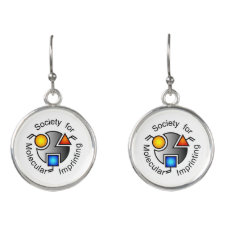
Authors: Zhou JR, Li BW, Qi AJ, Shi YJ, Qi J, Xu HZ, Chen LX
Article Title: ZnSe quantum dot based ion imprinting technology for fluorescence detecting cadmium and lead ions on a three-dimensional rotary paper-based microfluidic chip.
Publication date: 2020
Journal: Sensors and Actuators B: Chemical
Volume: 305
Article Number: 127462.
DOI: 10.1016/j.snb.2019.127462
Alternative URL: https://www.sciencedirect.com/science/article/pii/S0925400519316612
Abstract: In this study, a newly fluorescent ZnSe quantum dots (QDs) with ion imprinting technology was firstly realized on the three-dimensional (3D) rotary paper-based microfluidic chip platform which can be used to realize specific and multiplexed detection of Cadmium ions (Cd2+) and Lead ions (Pb2+). Compared to CdTe quantum dots, ZnSe quantum dots are less toxic and more environmental friendly. In addition, this design improved the portability of the device by transferred the liquid phase of ZnSe QDs@ion imprinted polymers to solid glass fiber paper. Moreover, the 3D rotary microfluidic chip (μPADs) showed great advantages including low cost, simple and fast facile operation, multiplexed detection, and showed good sensitivity and selectivity. Under optimal experiment conditions, our proposed method was enabled to realize specific and multi-channel determination of Cd2+ and Pb2+ ions. The developed sensor of Cd2+ μPADs provided a linear response from 1 to 70 μg/L with a lower detection limit of 0.245 μg/L, and Pb2+ μPADs provided a linear response from 1 to 60 μg/L with a lower detection limit of 0.335 μg/L, respectively. Excitingly, this newly designed 3D rotary μPADs exhibited quantitative information conveniently, which showed the promising application prospects to rapid testing target metal ions in environmental in the future
Template and target information: cadmium ion, Cd(II)
Author keywords: Paper-based microfluidic device, molecularly imprinted technique, fluorescent sensor, ZnSe quantum dots, Cadmium ions and lead ions



Join the Society for Molecular Imprinting

New items RSS feed
Sign-up for e-mail updates:
Choose between receiving an occasional newsletter or more frequent e-mail alerts.
Click here to go to the sign-up page.
Is your name elemental or peptidic? Enter your name and find out by clicking either of the buttons below!
Other products you may like:
 MIPdatabase
MIPdatabase









